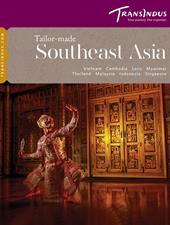The magnificent Khardung La, the world’s highest motorable pass at 5600 (18,373ft), surrounded by soaring Himalayan Peaks, was once the principal track connecting Kashgar in Xinjiang Province, China, to Leh, India, along the Ancient Silk Road. It’s passable for a short window each summer when temperatures rise and snows recede. Whether you cross it by jeep for an adventure of a lifetime, cross it stride a Classic Enfield Bullet for the ultimate thrill of the open road or trek parts of it, it guarantees a life-changing experience you will cherish forever.
Your reward, at the summit is the surreal and mesmerising Nubra Valley, hidden deep within the cold dessert sands of a high-altitude desert, with a backdrop of the soaring snow-covered peaks of the Karakoram and Ladakh ranges. Thanks to its lower elevation the Nubra Valley, is a fertile gem with fields barley, wheat, peas, mustard alongside the stunning orchards of walnuts, apricots, and almond.
The main settlement, Diskit, is a picturesque town located at the confluence of the Shyok and Nubra tributaries of the Indus River System with its traditional Tibetan-style houses, an old palace, and a ruined fortress that overlooks the dramatic plains, framed by towering peaks. Here, you can immerse yourself in the local culture and witness the vibrant festivities that still take place. A unique experience awaits you at the nearby Hunder, where herdsmen offer the signature activity of the Nubra valley, Trekking by the rare double-humped Bactrian camels’-a nostalgic throwback to the bygone era when this was a waystage of the old Silk Route. These camels, who live year-round among the cold desert dunes, grazing on seabuckthorn, are ready to take you on rides during the summer months – a perfect opportunity for a memorable photo!
There is a surprisingly wide choice of accommodation for such a remote location, and we have found some particularly desirable retreats for you.
It’s worth mentioning that this is Snow Leopard country, with a significant population. Although you won’t be able to see any in the summer months, when they retreat to the higher climbs, you might come across the remnants of their dinner!








